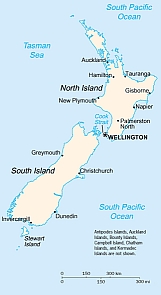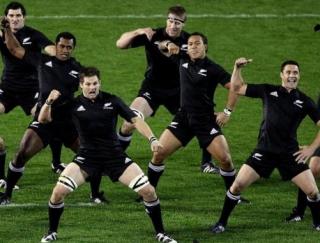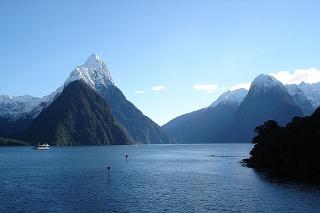
Exploring the history and experiences of mixed heritage persons and inter-racial relationships across the world

Exploring the history and experiences of mixed heritage persons and inter-racial relationships across the world
 Most of New Zealand’s 4.4 million population, informally called ‘Kiwis’, are of European, mainly British and Irish, descent and making up to 69% of the population. Nearly 15% of New Zealand’s population is made up by the Maori who are considered the indigenous Polynesian population of the islands. Asians make up nearly 10% of the population and other Polynesian peoples make up just over 5% of the population.
Most of New Zealand’s 4.4 million population, informally called ‘Kiwis’, are of European, mainly British and Irish, descent and making up to 69% of the population. Nearly 15% of New Zealand’s population is made up by the Maori who are considered the indigenous Polynesian population of the islands. Asians make up nearly 10% of the population and other Polynesian peoples make up just over 5% of the population.
Though generally accepted as Polynesians, there are those who do not believe that the Maori are a mixed race people. Dr. J. H. Scott concluded that ‘We know the Maori to be a mixed race, the result of a mingling of a Polynesian and a Melanesian strain. The crania already examined leave no room for doubt on this point’ when presenting the results of an examination of 83 Maori skulls. Even if this conclusion is not accepted, nowadays it is generally accepted that many Maori have some Pakeha (foreign/European) ancestry.
It is believed that the islands were previously occupied prior to the arrival of the war-like and cannibal Maori who then dominated and eventually eradicated the previous occupants. They are believed to have arrived in waves from all over the Pacific and Asian lands before 1300 CE which was well before the arrival of the Europeans. Those who believe that the Maori are a mixed race believe that much of that mixing happened during the emigration towards Aotearoa, the Maori name for New Zealand and often translated as "land of the long white cloud". Over centuries of isolation, the Maori developed their own culture and traditions, some of which still have influence from both Polynesian and Melanesian roots.
The Maori were divided into iwi (tribes) and hapu (subtribes) which would cooperate, compete and sometimes fight with each other. One group of Maori migrated to the Chatham Islands and developed their own distinct culture known as Moriori which was unwarlike and resulted in their decimation by 1862 by European diseases and invasion and enslavement by other Maori tribes.
The first European to have reached the islands is generally accepted as the Dutch explorer Abel Tasman in the service of the VOC (United East India Company), yes the very same involved in the colonisation of Indonesia. His expedition is also the first European one to reach Tasmania and to have seen the Fiji islands. However their New Zealand landing experience ended with four crew members killed and it was not until the British explorer James Cook did Europeans visit the islands again. After Cook, many ships landed and traded with the ingenious peoples which led to the introduction of potato, which became a stable food for the natives, and muskets.
The warlike nature of the peoples coupled with the guns resulted in a large number, some say, as many as 600 inter-tribal battles known as the Musket Wars that reduced the Maori population by between 30,000 and 40,000. During the 19th century, European diseases contributed to a further 40% decline of the population at the same time as missionaries began to settle and convert the people.
 In 1835 under the treat of the French, a number of Northern island tribes asked the King William IV of the United Kingdom for protection which eventually led to the Treaty of Waitangi (Maori: Tiriti o Waitangi). The treaty was drafted in English and Maori by William Hobson and it was signed on the 6 February 1840 by representatives of the British Crown and various Maori chiefs from the northern North Island. After that signing event, copies of the treaty were circulated to other tribes and over the following months a further 500 chiefs’ signatories, including surprisingly at least 13 female ones, were added to the Treaty. During its circulation, William Hobson declared British sovereignty over all of New Zealand on 21 May 1840 which paved the way for large scale immigration from the British Isles. The two language version of the treaty which was supposed to recognise Maori ownership of their lands and other properties and give the Maori the rights of British subjects did not correspond exactly and there has been a number of issues leading to the setting up of a Waitangi Tribunal in 1975 for mediation purposes after a Maori protest movement had developed.
In 1835 under the treat of the French, a number of Northern island tribes asked the King William IV of the United Kingdom for protection which eventually led to the Treaty of Waitangi (Maori: Tiriti o Waitangi). The treaty was drafted in English and Maori by William Hobson and it was signed on the 6 February 1840 by representatives of the British Crown and various Maori chiefs from the northern North Island. After that signing event, copies of the treaty were circulated to other tribes and over the following months a further 500 chiefs’ signatories, including surprisingly at least 13 female ones, were added to the Treaty. During its circulation, William Hobson declared British sovereignty over all of New Zealand on 21 May 1840 which paved the way for large scale immigration from the British Isles. The two language version of the treaty which was supposed to recognise Maori ownership of their lands and other properties and give the Maori the rights of British subjects did not correspond exactly and there has been a number of issues leading to the setting up of a Waitangi Tribunal in 1975 for mediation purposes after a Maori protest movement had developed.
Prior to 1974, there appeared to be a large drop in the Maori population numbers and this was mainly due to the fact that a person had to have proven bloodline or genealogy. A Maori was defined as someone who was ‘half-caste’ or more. The Maori Affairs Amendment Act 1974 which also did away with the term ‘native’, allowed for self–identification and redefined a Maori as "a person of the Maori race of New Zealand; and includes any descendant of such a Maori". This increased the population especially since many new Governmental initiatives were also being introduced to help the indigenous population.
 If you have had the pleasure of watching an international rugby match involving the ‘All Blacks’, you will have seen them performing the pre-match haka (Maori challenge) which they have been doing since a tour of New South Wales, Australia in 1884. The impression of this tradition may give a sense of a nation of racial peace and tolerance but New Zealand does have its fair share of racial tensions. In fact, a special haka,the Kapa o Pango, has been composed and ‘...designed to reflect the multi-cultural make-up of contemporary New Zealand – in particular the influence of Polynesian cultures’ for use at special and important matches.
If you have had the pleasure of watching an international rugby match involving the ‘All Blacks’, you will have seen them performing the pre-match haka (Maori challenge) which they have been doing since a tour of New South Wales, Australia in 1884. The impression of this tradition may give a sense of a nation of racial peace and tolerance but New Zealand does have its fair share of racial tensions. In fact, a special haka,the Kapa o Pango, has been composed and ‘...designed to reflect the multi-cultural make-up of contemporary New Zealand – in particular the influence of Polynesian cultures’ for use at special and important matches.
In the 2006 census, many New Zealanders, including celebrities such as Dame Kiri Te Kanawa (opera singer), did not state their ethnicity, many of these claiming multiple roots and nearly 20% choosing to be recognised as New Zealander.
Examples of racial tension or issues have occasionally made it to the international press. Cases of such as that of Maori MP Hone Harawira who told the New Zealand Herald in July 2010 that he "wouldn't feel comfortable" if one of his children came home with a Pakeha partner and the resignations of one TV presenter Paul Henry and one radio presenter, Michael Laws over comments made about the Indian Delhi Chief Minister Sheila Dikshit. Recently a businessman, Geoff Portman, was so incensed and sent a racially charged email complaint about "the so-called Maori flags"(Tino Rangatiratanga) flags flying at his children’s school.
It is debateable whether the growing anti-immigration sentiment expressed by the leader of the political party `New Zealand First`, Winston Peters who said in 2004 that "We (New Zealand) are being dragged into the status of an Asian colony and it is time that New Zealanders were placed first in their own country", is racially motivated against mainly Asian immigration. In 2005 he brought the Maori into the debate claiming that in the next 17 years they would be out-numbered by the Asians.
 New Zealand’s mainly European population was boosted by a ‘Eurocentric’ immigration policy since WWII when the country accepted 5,000 refugees and displaced persons from Europe and then a further 1,100 Hungarians between 1956 and 1959. Further ‘nationality based’ immigration from Greece, Italy, Poland and the former Yugoslavia and after a bilateral agreement, a large number of Dutch immigrants came to New Zealand when it became clear that not enough skilled migrants would come from the British Isles. Like Australia, the Government introduced free and assisted passages in 1947 which was further expanded in 1950 to encourage immigration. A new Immigration Act in 1987 which became effective 1991 replaced the ‘nationality’ test with a point system similar to Canada’s that aimed to classify migrants on their skills, personal qualities, and potential contribution to New Zealand economy and society. This coupled with the need in the 1950s and 1960s for cheap labour that led to ‘encouragement of migration from the Pacific Isles has led to an increase of non-European immigrants including Asians.
New Zealand’s mainly European population was boosted by a ‘Eurocentric’ immigration policy since WWII when the country accepted 5,000 refugees and displaced persons from Europe and then a further 1,100 Hungarians between 1956 and 1959. Further ‘nationality based’ immigration from Greece, Italy, Poland and the former Yugoslavia and after a bilateral agreement, a large number of Dutch immigrants came to New Zealand when it became clear that not enough skilled migrants would come from the British Isles. Like Australia, the Government introduced free and assisted passages in 1947 which was further expanded in 1950 to encourage immigration. A new Immigration Act in 1987 which became effective 1991 replaced the ‘nationality’ test with a point system similar to Canada’s that aimed to classify migrants on their skills, personal qualities, and potential contribution to New Zealand economy and society. This coupled with the need in the 1950s and 1960s for cheap labour that led to ‘encouragement of migration from the Pacific Isles has led to an increase of non-European immigrants including Asians.
The point system’s annual quota tends to be breeched but there is an overall decline in population as more people tend to leave than arrive. In the 2004-2005 year, the net effect was a population decline of 0.25%. New Zealand does have a large and growing diaspora with the vast majority of the nearly half a million non-residents making their home in neighbouring Australia. Despite this, in 2005, some 20% of New Zealanders were born overseas, one of the highest percentages of any country in the world. The 1987 Act has now been replaced by the 2009 which aimed to improve the Immigration system. The current anti-immigration rhetoric is bound to lead to another review of the Immigration policies in the next few years as is happening in places like the UK.
In the 2006 census, about 10 percent of New Zealanders identified as ‘half-caste’ and that included the non-Maori mixes of European/Other Polynesian and European/Asian. It will be interesting to see how this figure changes as the 2nd and 3rd generation of both European and Asian immigrants assimilate into the society. I suspect this section of the community to grow as it is in other ‘Western’ countries.
LINKS